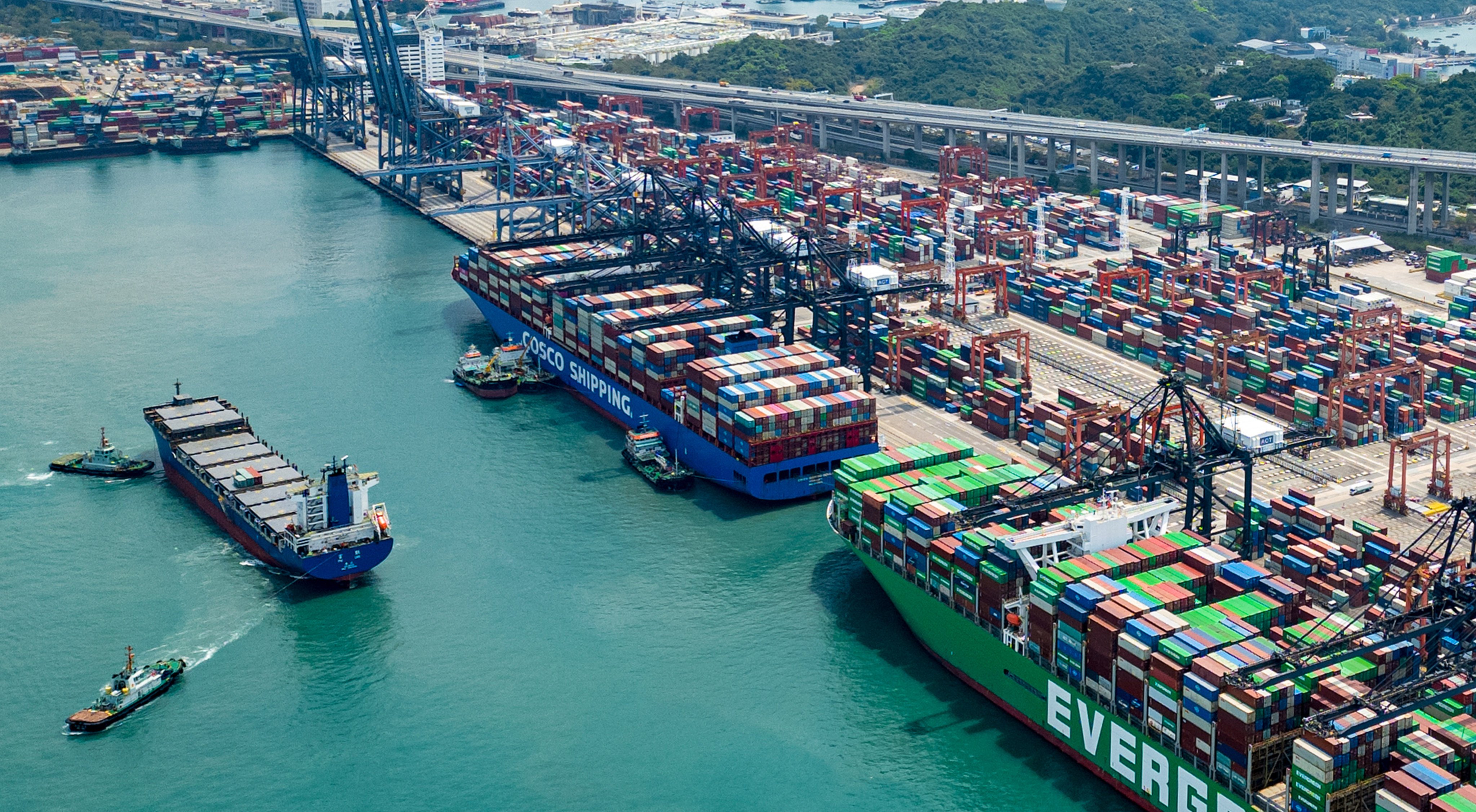Hong Kong’s exports surged 15.5 per cent in May from a year ago, with economists attributing the increase to the front-loading of shipments by businesses racing to beat the July deadline of a tariff truce between China and the United States.
The value of total exports reached HK$434.1 billion (US$55.3 billion) in May, the Census and Statistics Department said on Thursday. The strong performance, which followed a 14.7 per cent increase in April, comes during a 90-day grace period on tariffs running from April 9 to July 8.
Billy Mak Sui-choi, an associate professor in the department of accountancy, economics and finance at Baptist University, said that firms were rushing to ship goods during the “90-day window”.
Looking ahead, Mak said June’s export figures should remain strong, but the outlook for July was highly uncertain.
“I am cautiously optimistic for next month, but I estimate there will be uncertain factors in July,” Mak said.
The key question was what the US would do after the grace period ended, as it could potentially raise tariffs on Southeast Asian nations as well, challenging the “China plus one” diversification strategy, he added.
For the first five months of 2025, total exports rose by 12.6 per cent compared with the same period last year. Imports in May grew by 18.9 per cent to HK$461.4 billion, leaving a trade deficit of HK$27.3 billion.
While the export growth was driven by a 21.8 per cent climb in shipments to Asia, sales to major Western markets fell sharply. Decreases were registered in the values of total exports to the United Kingdom, which plunged by 52 per cent, and the US, which fell by 18.4 per cent to HK$23.74 billion.
In contrast, shipments to Japan soared by 96.2 per cent, with those to Malaysia and mainland China growing by 55.3 per cent and 17.6 per cent, respectively.
Mak added that the data reflected a deeper supply chain shift not detailed in the government statistics.
“If the industrial chain is shifted from China to other places, manufacturers in Hong Kong or on the mainland have to transfer parts, raw materials or intermediate goods to a third place,” Mak said.
Mak noted other factors were also at play, including China’s own export controls on rare earths, which might have redirected the flow of semi-finished goods through Hong Kong.
He also pointed to a weaker European market, where demand was dampened by the wars in the Middle East and Ukraine, in contrast to relatively better economic performance in Asia.
A government spokesman said that while the mainland economy should support exports, the city would remain watchful.
“The government will continue to closely monitor the external environment and stay vigilant to the elevated geopolitical tensions and uncertainties surrounding trade policies.”
Vera Yuen, a lecturer in economics at the University of Hong Kong, suggested the data reflected a potential restructuring of trade routes, noting a drop in exports to the US alongside the increase to Association of Southeast Asian Nations (Asean) members.
“In May, exports to the US dropped; the increase was in Asean,” Yuen said. “Perhaps some production processes are within these Asian countries. Or trade routes have been shifted to pass through other countries before going into the US.”
Professor Lee Shu-kam, head of Shue Yan University’s department of economics and finance, said the tariff pause was the main impetus for export growth.
“Both exports and imports are mainly those two types of goods … With the tariff pause … it means shipping the goods out faster. So, seeing them go out from various places in Southeast Asia, this is one of the possible factors.”
